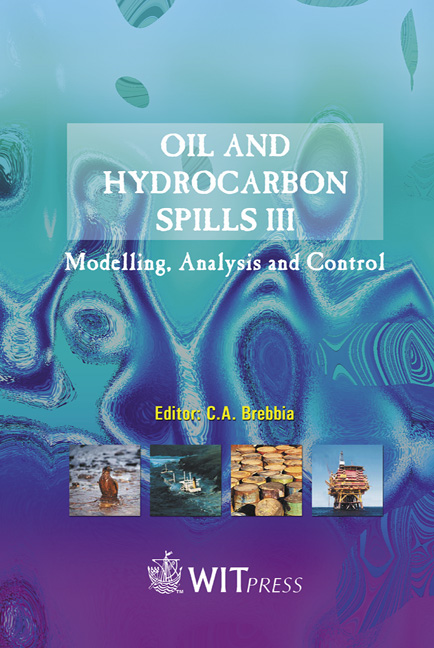Microwave Techniques To Detect Oil Spill
Price
Free (open access)
Transaction
Volume
59
Pages
Published
2002
Size
463 kb
Paper DOI
10.2495/OIL020101
Copyright
WIT Press
Author(s)
C. De Vecchi, P. Pavese, R. Ravera, V. Sesia & P. Trivero
Abstract
Hydrocarbon compounds produce huge areas of surface film reducing water surface roughness. Measurements of slick-induced damping of short-gravity waves excited by the wind provide data that can be useful for the investigation and characterization of ocean slicks on a thermodynamic basis. A useful parameter to characterize the presence of surface film is damping coefficient that should measured with microwave techniques such as interferometric wave gauge and multifrequency radar system we have developed. Measurements on sea surface films were conducted during several experiments in marine areas. The measurements consisted in surface elevation sampling using the interferential microwave probe, which measures wave heights on absolute self-calibrating scale. The measurements of water height can be accomplished with an accuracy of the order of few micrometers from 0 to 20 Hz. Wave spectra are performed for both clean and film-covered sea surface conditions to determine the wave attenuation ratio in the short-gravity waves. The microwave probe was utilized in a laboratory tub to study the relationship between wave damping and film thickness. Besides this instrument we built, for the same purpose, a fully-coherent and impulsive Doppler radar scatterorneter working at microwave L (1.35 GHz), S (2.7 GHz) and C (5.4GHz) bands to measure the radar backscatter from the sea surface from fixed positions in order to test the SAR (Synthetic Aperture Radar) system capability in monitoring sea surface pollution. During aircraft and satellite campaigns we tested these instruments and we demonstrated their ability to detect and characterize sea surface slicks.
Keywords





